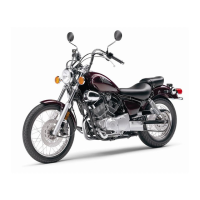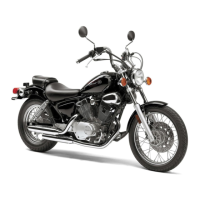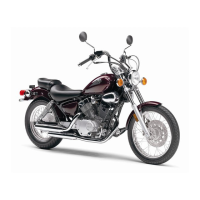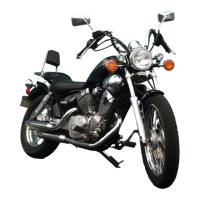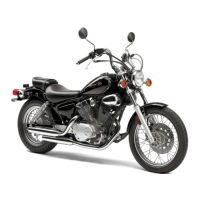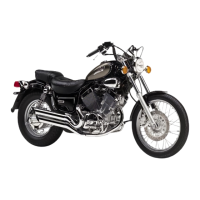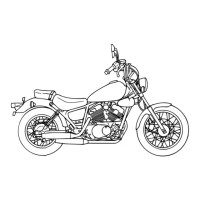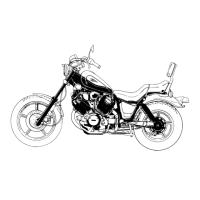
Do you have a question about the Yamaha VIRAGO XV250R and is the answer not in the manual?
| Engine Type | Air-cooled, 4-stroke, SOHC, V-twin |
|---|---|
| Displacement | 249cc |
| Transmission | 5-speed |
| Final Drive | Chain |
| Front Suspension | Telescopic fork |
| Front Brake | Single disc |
| Rear Brake | Drum |
| Front Tire | 3.00-18 |
| Rear Tire | 130/90-15 |
| Bore x Stroke | 49.0mm x 66.0mm |
| Compression Ratio | 10:1 |
| Power | 8, 000 rpm |
| Fuel System | Carburetor |
| Fuel Capacity | 9.5 liters |
This manual provides understanding of operation, inspection, and basic maintenance.
Information distinguished by symbols like WARNING, CAUTION, and NOTE for safety.
Critical warning to read the manual and riding tips booklet before operating the motorcycle.
Emphasizes pre-operation checks, visibility, and intersection caution for accident prevention.
Covers operator experience, skill limits, posture, and avoiding alcohol/drugs while riding.
Details essential protective gear and cautions against unauthorized motorcycle modifications.
Provides advice on distributing cargo weight and installing accessories for safe handling.
Discusses accessory effects on stability and hazards associated with gasoline handling.
Highlights the importance of reading and understanding various labels on the motorcycle.
Identifies key components visible from the left side of the motorcycle.
Identifies key components visible from the right side of the motorcycle.
Details the location and function of various controls and instruments on the motorcycle.
Explains the main switch positions and the function of indicator lights.
Describes the speedometer functions and the operation of handlebar switches.
Details the engine stop/start switches and the operation of the clutch lever.
Explains the operation of the brake lever, brake pedal, and fuel tank cap.
Provides information on checking the fuel level and the motorcycle's fuel tank capacity.
Specifies recommended fuel and details the operation of the fuel cock.
Explains fuel cock reserve/prime positions and the starter (choke) lever usage.
Details how to operate the steering lock and remove the rider seat.
Covers rider seat installation and the operation of the helmet holder.
Explains shock absorber preload adjustment and sidestand functionality.
Details the functions and purpose of the ignition circuit cut-off system.
Highlights the owner's responsibility for checking vital components before each ride.
Lists specific checks for drive chain, tires, brakes, clutch, and electrical systems.
Emphasizes familiarizing with controls and general safety before riding.
Guides on starting a cold engine, including necessary conditions and procedures.
Explains gear shifting, proper acceleration, and deceleration techniques.
Details the engine break-in period and proper parking procedures for safety.
Highlights the importance of maintenance, owner's tool kit, and service schedules.
Covers maintenance for spark plugs, engine oil, oil filter, air filter, and carburetor.
Details maintenance for valve clearance, tires, brakes, clutch, chain, cables, suspension.
Covers battery, fuses, headlight service, wheel service, and troubleshooting.
Provides guidelines for cleaning the motorcycle, including specific precautions.
Offers advice on proper storage techniques for short and long durations.
Lists key dimensions, engine oil recommendations, and fuel type specifications.
Details specifications for chassis, tires, wheels, brakes, suspension, and electrical systems.
Guides on recording key identification numbers and model label information.
Covers reporting safety defects, noise regulations, and maintenance record keeping.
Details the limited warranty, customer responsibilities, and Yamaha Extended Service (Y.E.S.).
